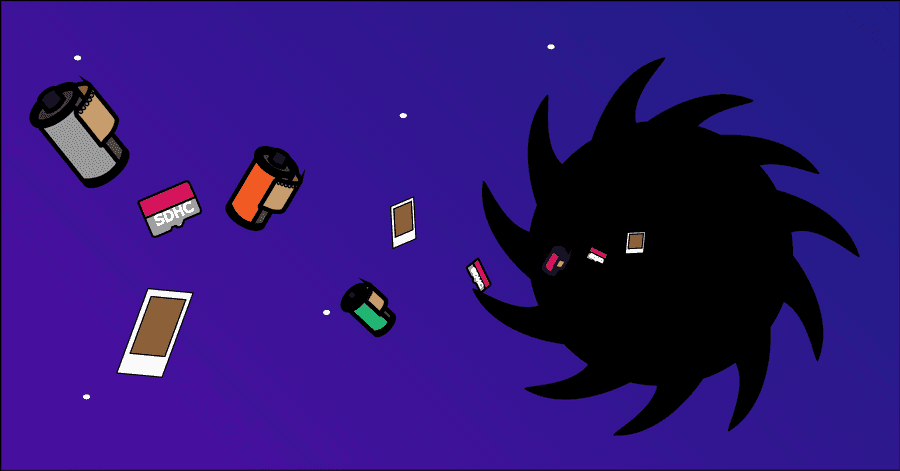The Void

During my first steps in photography, it seemed to me like the gear used was super important. Lenses, bodies. I mean, I had a Zenit ET for my first few rolls, so that was valid in a way. Not that I could afford much (or frankly, I decided not to spend too much), really, so I went with cheap, albeit effective options.
I went through some decent gear, some of which I still use. I also acquired some proper equipment, even though it was bit more expensive for my tastes - mainly, Mamiya RB67 (got a good deal on it, and they were cheaper back then too), and a Minolta XG-1 with really nice lenses. I had enough with the cheap gear, so I decided to focus only on good stuff. I also had the opportunity to handle a Leica M7 with the 35mm f1.4 Summicron, and the M10 as well. I shot the fancy films like Portra 400 and Pro 400h.
They're good. Objectively good.
And that's not a bad thing, you could even say you'd start saving up for all that, splurge every time you're ordering film, except... photos exist in a void. A picture taken in one moment cannot be compared to one taken with different gear. Except for test benches, but those are stupid. And it's surprising to no one, but gear that is good enough, is... good enough. Without a way to compare a picture taken with one set of equipment to another one, there's only one thing left for you to do - appreciate the results.
There are things that are objectively bad (like, Zenits, Holgas, Lomo stuff). They still have their uses, either as a cheap substitute, or for an artistic effect. Things can be bad, and they can get better, but after a certain point, the diminishing returns hit hard. You can get as good results with good quality, but more reasonably priced equipment, as you would with a Leicablad on Portra 420.
In The Void, you can't compare your photo taken on a reasonably priced lens to the state of the art lens of the same parameters. Can't compare a portrait shot on a decent 70s nifty-fifty, or even a Helios 44, with one on Nikon Z 58mm f0.95, because it's impossible to shoot the exact same thing with a different setup. Yep, the Z 0.95 is miles beyond in image quality and possibly other aspects too, but... does that make the other picture bad in any way? Maybe if you made a mistake, misfocused, or chose wrong exposure values. Maybe it will be slightly softer, but at the end it's still a portrait, and if you like it, or can edit it to like it, great. You can still see it's a person, with their very face, clothes.
The Void is exactly this, the inability to compare, which thrives on "good enough". Because what you're trying to show is so much more important than how technically perfect it is shown.
And that's for a trained, photographer/editor eye. Whoever sees your picture, will be even less bothered with imperfections.
Anecdotal - I showed my friend some pictures from the trip to Korea, shot on a Canon 700d. He was happy with the results, I was too, but at that particular viewing all I could see was awful digital noise of the old APS-C sensors. I know the pictures could've been nicer if I took them on the digital camera I have now, if I purchased it earlier, but I couldn't. I work with what I have, and if I take a step back and allow myself to indulge in the images, I'm fine. Because in The Void, they look good to me. That camera is right on the edge of "good enough" and "pretty bad", but it still let me share the beautiful landscapes of the country I've seen with my own eyes.
The Void is a concept that can apply anywhere. In a way, it's a paradox of choice, but the thing is, you don't have a choice at the exact moment you're pressing the shutter button. Flooded with many options, there's a desire to get the best of the best, forgetting that "good enough" is... good enough, without the negative connotations it may seem to bring. The most expensive gear may give you an edge, but that's not the edge you really need. You're gonna cut yourself on it, son, or work yourself to death trying to grasp what's not really there (and pay the debt for it).
At this point then, I can safely say I don't want a Leicablad. The images I get with my equipment are easily on par on what I would've gotten with those, as no obvious imperfection really shows up. Especially on film, which is much lower resolution than current, even mid/low budget digital sensors.
tl;dr: your lenses are good, you can't compare exact same pics taken with different lenses, enjoy the hobby.
Have you enjoyed the post or found it useful? Consider throwing some currency using the button below or directly through Ko-fi.
If you like a photo from here enough that you'd like to have a print of, feel free to contact me by email.
This page will never have ads, sponsors or any other annoyances; I believe in the Old Internet Spirit. It does mean though that it's all shot and written in my spare time which is limited at times.